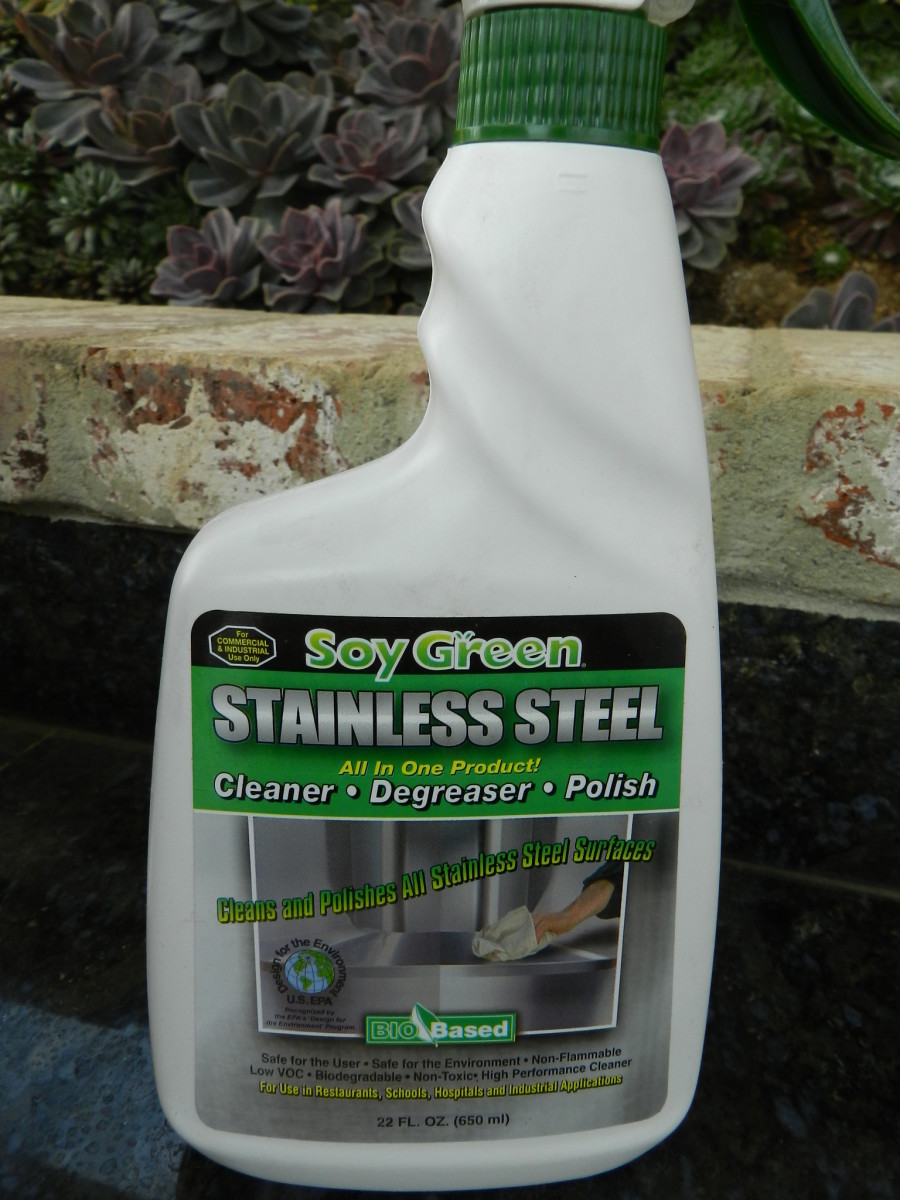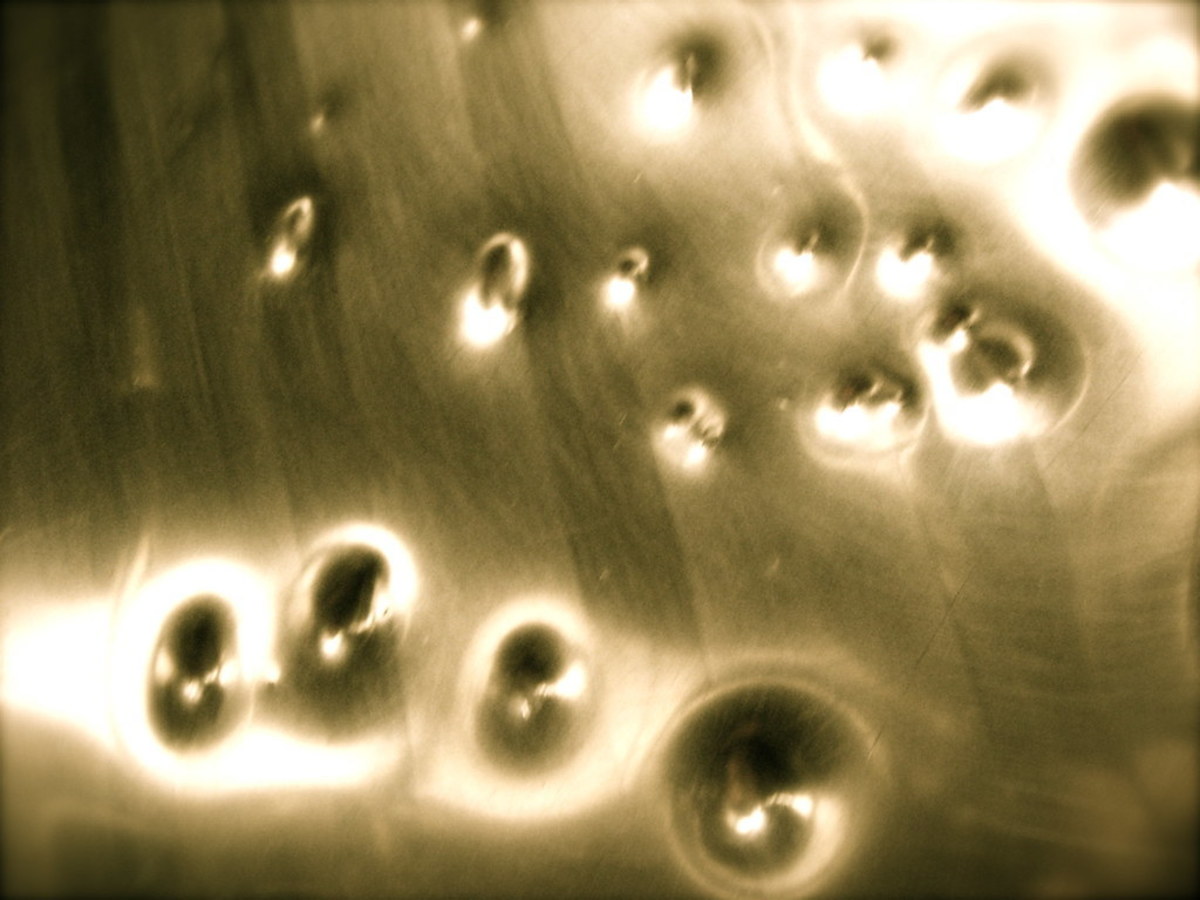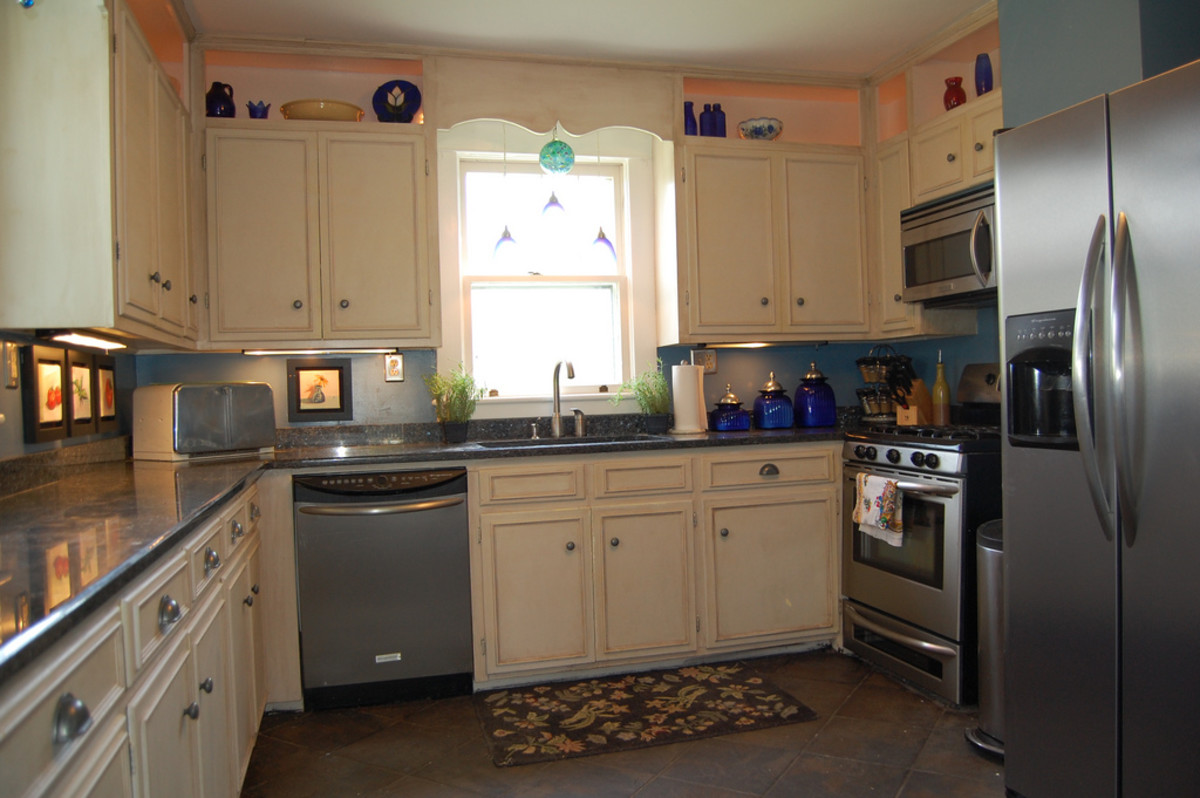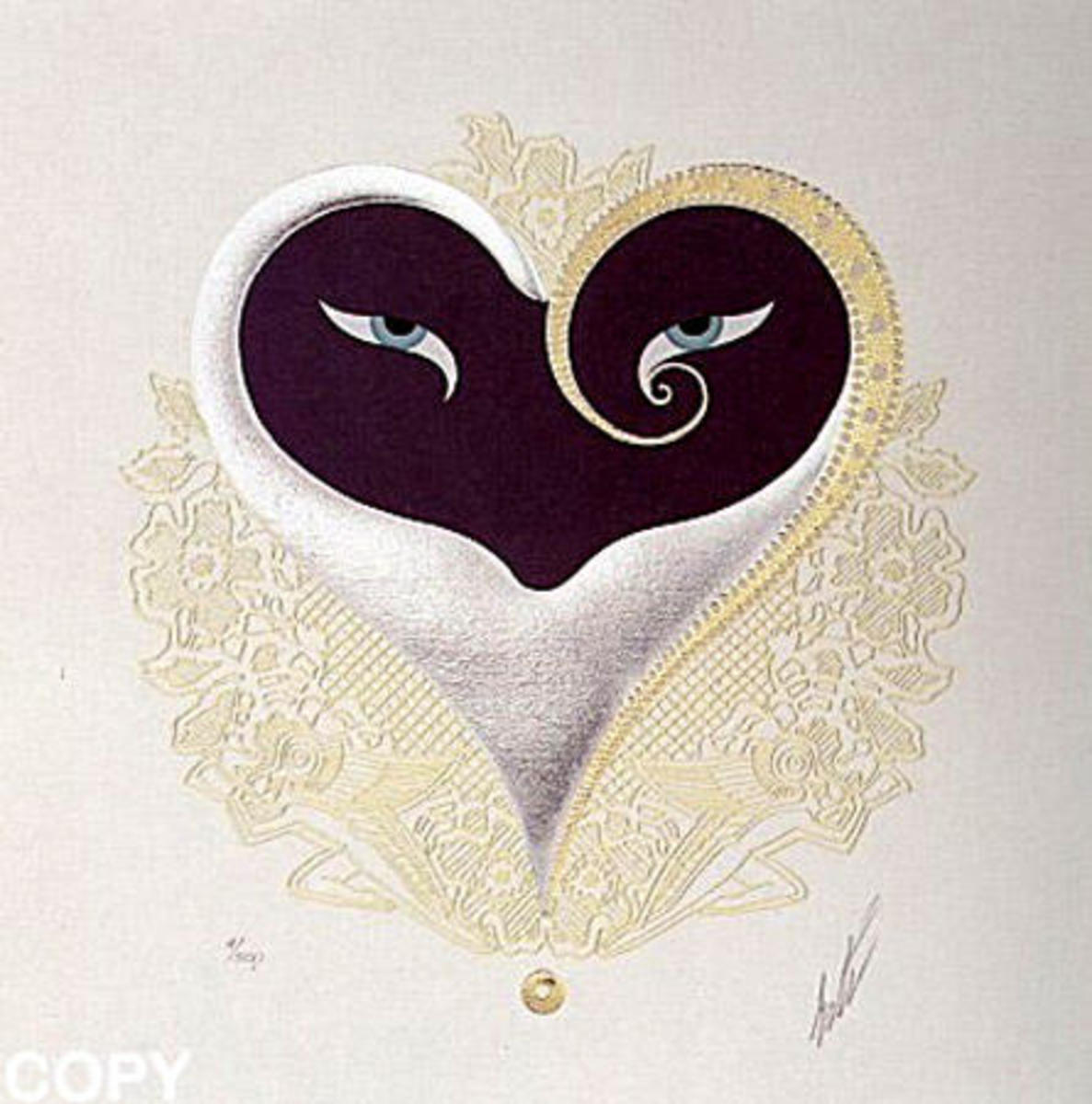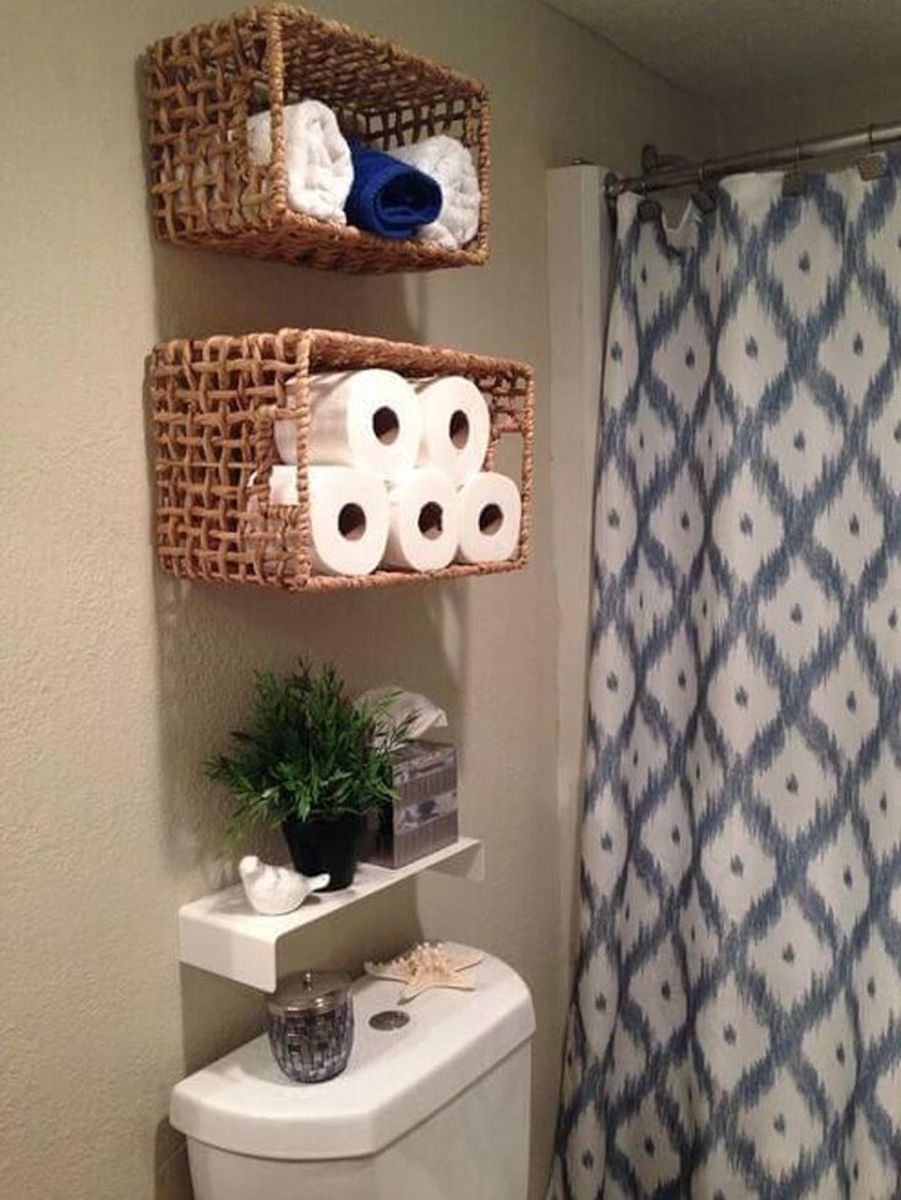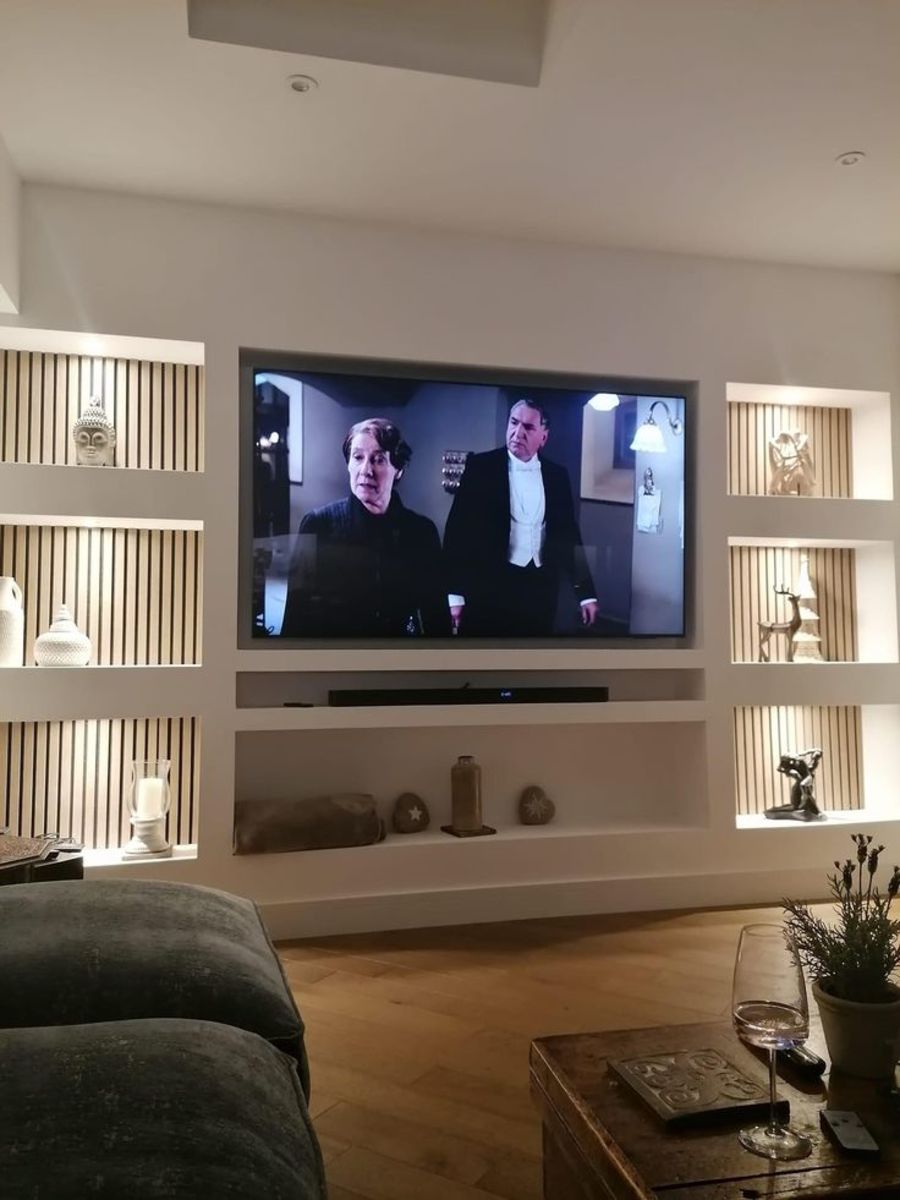Low Maintenance Art Deco Materials
I love Art Deco. I love the boldness, optimism, and modernity. I want things in life to be better and easier for everyone. Time is a tremendously valuable resource and anything that requires high maintenance is the enemy of time. Every minute spent cleaning is a minute you're not spending with your family, friends, hobbies, or passions. Over the lifespan of your home, those minutes add up to hours, days and weeks.
My philosophy with home decor is to maximize both beauty and comfort while minimizing maintenance. Maintenance can mean repairing and replacing as well as just cleaning. These are some ideas I have towards that goal. I'm not an architect or interior designer. I know what appeals to me, but I don't know everything (gasp!). I hope this article serves to stir your creative juices and save you time.
One more thing before I start. While I've looked at many different luxury homes and architectural styles and done a little reading on construction processes and history, I don't care at all about labels. The differences between Art Deco, Art Nouveau, Modern, Post-Modern, etc. bore me. I'm interested in principles. What appeals to me personally is elegance, tidiness, and an idea or theme that ties everything together.
My theme
My dream home is a small one-story house in California with oceanfront views. My theme is mixed Art Deco and tropical Caribbean. The feeling when you walk in should be the calmness and comfort of the warm tropics. To achieve this, I want the layout, trim, furniture, and artwork to give the modern Art Deco vibe. The tropical theme will be attained with the actual view of the ocean, smooth pantone wall colors, and clear views of outdoor gardens and palms.
Flooring
You'll eventually discover this about me so I may as well just say it up front. I'm not a fan of any building material that looks like wood. I of course love forests and trees, but I've grown up around wood furnishings all my life and I'm just tired of it.
My first thought for flooring was marble, but after doing a little research it's too much maintenance for me. You have to sweep and mop often to avoid scratches. And if it gets scratched or stained it's difficult to replace. I finally throw in the towel when I read you have to use special cleaning solutions with balanced pH levels and avoid spilling acidic foods.
What appeals to me more is stained concrete. When dyes are added, dull gray concrete can look like luxurious natural stone. Looking through photos, often I can't tell the difference between stained concrete and marble. Stained concrete however is very low maintenance. It will not scratch, dent, or stain. Cleaning is as simple as running a broom and mop. Every few years, you may want to have it resealed with brushes and rollers (like most other hard floors). The downsides are its heavy weight, its hardness (think falling down on it), and if exposed to wet or moving ground or not sealed correctly it may mold or crack. The heavy weight is fine with me, as I don't plan on having a basement underneath or installing it onto a second story (which is still possible). I can mitigate the hardness with rugs around beds and furniture if it becomes too uncomfortable or cold. The cracking is my biggest concern. Some amount of cracking is inevitable. The size of the cracks apparently can be mitigated by hiring experienced professionals who know how to reinforce it and install it properly. Owners seem to be okay with the small cracks as they largely blend in with the stain pattern. The large crack potential still worries me, though.
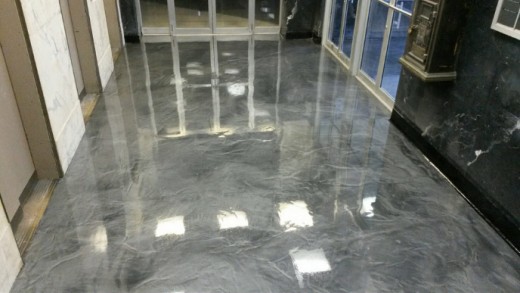
Which is why I am reluctantly leaning toward large tiles. I would rather not see the crease lines that are between tiles, but those can be minimized, and they can still look very nice with the right pattern. There are different types of tiles, but it looks like the best choices for our low maintenance needs are either ceramic or porcelain. Ceramic is cheaper and easier to install, but porcelain has the slight edge.
Porcelain absorbs less water, stands up better to spills, and is more durable. It is very low maintenance, just dusting and mopping. While very strong, if for any reason it does get damaged, it's easy to have replaced.
What designs, if any, to place in the floor is a big decision. Art Deco is known for its bold lines and colors, but it can easily be overdone. I believe every visual element in a home is in competition for your attention. If everything is screaming "Look at me!", you'll feel bombarded and uncomfortable. Floors are a large part of the surface area in a home, which means if you go bold there, the walls, ceiling, and furniture better be low-key. For this reason, I may forgo any design and opt for a glossy stone-like pattern. I also prefer the larger tile sizes because there are fewer crease lines.
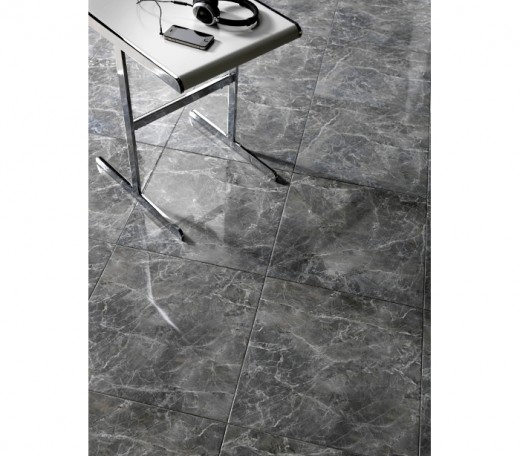
Skylights and Windows
Most people dislike cleaning windows. Unfortunately, I don't have an alternative to cleaning them. My advice is rather generic. Avoid skylights. I love skylights, but going up on the roof to clean them from the outside is not my idea of low-maintenance. I'm also forgoing the Deco-styled stained glass because it's difficult to clean as well. On the ground floor, I'm opting for full-height metal-framed picture windows, which are simple, elegant, and easy to clean provided you have easy access from outside and an extended brush and squeegee. The downsides to the picture window is that it doesn't physically open to allow fresh air on nice days. For fresh air, I'll have glass doors with a screen. The other downside is the high price.
If I wanted a second-story home, I would consider double-hung windows. Both top and bottom panes of double-hung windows swing indoors so that you clean the outsides without twisting or turning your body.
Window treatments. A window treatment is just something that fully or partially covers your window. They have different functions. They control the amount of sunlight (and heat) entering the room, help insulate the room from cold air coming off of the window, provide privacy for those inside, and also act as a decoration. Most people like blinds or curtains because they add comfort or warmth to a home. I'm in the minority. I don't like either. Not only do they look outdated, they are difficult to keep clean. Cloth curtains need to be removed and washed and blinds are impossible to get thoroughly clean.
My goal is to have no window treatments at all. I prefer the sleek luxury modern look with lots of light. I do still like privacy, though, especially at night. I'm not sure if owners of these homes have fewer privacy concerns or if they are situated on large properties that are better shielded from their neighbors.
If I can't avoid using window covers, the best no-maintenance choice I've found so far are roller shades. Roller shades are those simple pull-down shades. Tug the shade again and it rolls back up out of sight (or you can use pull chains or even have them remote controlled). Order them custom-fit to your window sizes, even very large ones. You'll probably want some sort of valance or fascia as well. (Where do they come up with these names?) These are just coverings you put over the top of your window, used to hide or enclose your shade mechanism. The three types of roller shades are solar, light filtering, and room darkening. For privacy at night, the room darkening is most effective.
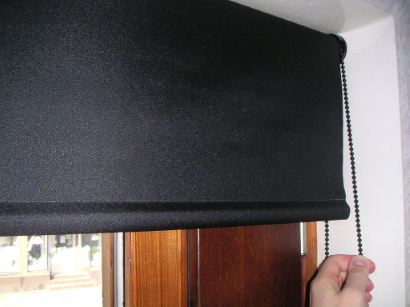
Walls
Avoid recessed walls, built-in displays, or free-standing partition walls. Well, partition walls may be worth the extra top-cleaning if they are designed to allow natural light to flow throughout the house. With any of these, just keep in mind that the more items you display, and the higher up you display them, the more time it takes to dust and clean. More surface area = more time cleaning.
Corbels. Corbels are just supports. They are placed under shelving, fireplaces, or other overhangs. I probably won't use them but I added this for your consideration. They may also look good on the frames of wide rectangular hallways.
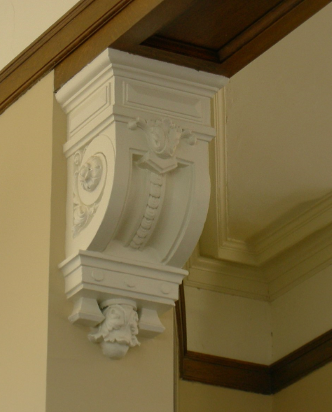
Elegant molding and baseboard. I think the easiest way to make an ordinary house look elegant is to add carefully picked molding. For me, this is the best place to go full Deco. Think sharp geometric designs, stepped down ziggurat patterns, foliage, and chevrons. There are also many colors to choose from. Bronze, copper, gold, silver, or antiqued and hand-painted looks as well. I may go with an all white trim as a nice contrast with the wall color I choose. I think this would help the trim design stand out more in the room.
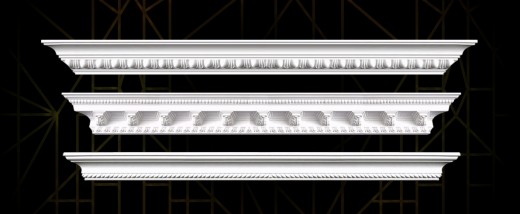
Light Fixtures
Another dislike on most people's cleaning list is hanging light fixtures and fans. I won't have any hanging lights but I don't mind some types of wall mounted fixtures. You can dust lightly for webs every few weeks and clean them properly when the bulbs need changed. There are many Deco-styled wall-mounted lights that look great. Many of my favorites are open at the top which admittedly is a bug and dust magnet. The only ones I would consider are hard-wired into the wall (no cords showing).
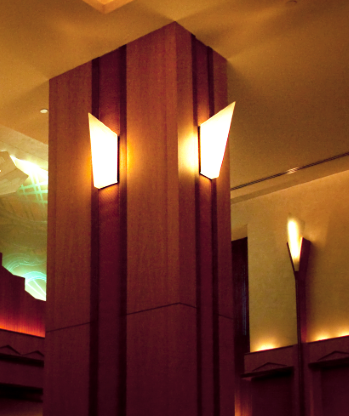
For general light, the most attractive and lowest maintenance lighting I've found are recessed down lights (typically installed when the house is new or during a major renovation). I'll choose long-lasting LED bulbs to minimize bulb changes (LEDs last over 20,000 hours of use). Two bulb types are "directional" (reflectors let you point the light where you want) and "diffuse" (general 360 degree lighting).
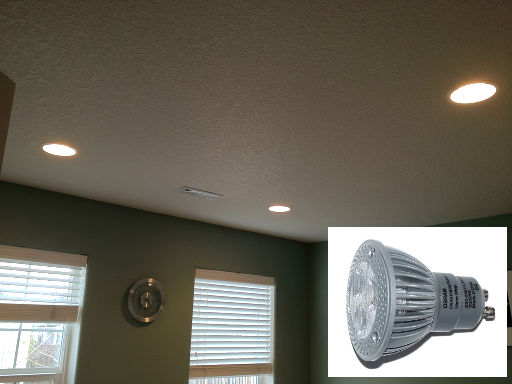
Bathrooms
Bathrooms are maybe the most hated room in a house to clean. The main culprits are toilets, tubs, drains, grout, and glass doors and tracks.
Toilet. In the United States, most of us have a two-piece toilet, with a tank that is bolted separately onto the bowl. Two-piece toilets are harder to keep clean because grime gets in the seam between the tank and bowl. The one-piece toilet doesn't have that seam.
Wall-hung toilets are supposedly rising in popularity. It is more stylish and the advantage for cleaning is that you can clean the floor easily underneath. But I'm hesitant to have the water tank installed into the wall. If it leaked without your knowledge that could create all kinds of hidden damage. Without an access panel, you would also have to tear your drywall apart if it needed to be replaced. The other occasional complaint I read is that the mounting bracket installed into the wall loosens over time, meaning it has to be opened up and re-tightened. They're dominant in many European countries though, so maybe I'm missing something. I'm tentatively leaning towards a flat one-piece toilet.
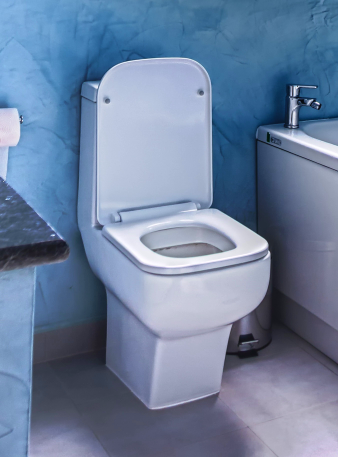
Shower and tub. White stains form on tubs and shower stalls when soap suds, skin oils, and hard water mix together. They are particularly noticeable on the shower stall glass and its running tracks. One solution is to get a water softener unit for your house. This is not a low-maintenance fix as you have to add salt into the unit every few months, but it saves your plumbing and sinks from staining and clogging.
Also, I'll just skip the tub and shower stall door altogether and install a doorless walk-in shower. If you go this route, have a good ventilation fan in the bathroom, use a rainfall-type faucet that aims straight down, and keep the shower faucet away from other bathroom fixtures. For floor tile in the shower stall, smaller is safer. Small tiles will give you more traction to lower the chance of slipping. These small tiles are installed in block-shaped strips. 2" x 2" tiles are safe, and 1" x 1" are safer still. I will choose very large tiles for the stall walls, however. Another obvious but important point is to double-check that your installer has your floor sloped enough into the drain. It would be extremely frustrating to have water puddle up on your floor (and make it much harder to keep clean).
I'll also choose a curbless shower floor. A curb is just a step, typically 4"-6" high, that separates the shower stall from the rest of the bathroom floor and helps contain the water. I like those features but the potential tripping hazard leans me toward curbless.
Grout. I've read many complaints of people hating to clean grout. Grout is a form of wet concrete that is used to fill the gaps in between tiles. It hardens after application. The problem many people have is that when it gets dirty, the grout changes color, often to dirty gray or black. No matter how hard they scrub, the grout holds the dirt. I've read that this is common with many older grout products and that to prevent this all you need to do is use a high quality stain and mildew resistant grout that doesn't even need sealing. There are enough complaints however for me to consider using epoxy grout instead. Although it has a more plastic-like look and it is harder to apply, epoxy is completely waterproof and more durable. With epoxy, you'll still have to clean the floors obviously, but when you do, you will get your original color back (and you won't have to seal it).
Sink. I initially liked the idea of a wall-mounted faucet in the bathroom because it looks better, saves a little counter space, and makes cleaning the sink easier. The biggest problem I have with them is that you will need an access panel on the wall to the pipes and shut-off valves in case you have to troubleshoot or replace the faucet. If you don't have easy access to it, deck mount faucets still look great ("deck mount" is just a fancy way of saying installed onto the counter top). I'll probably choose a deck mount as to avoid having to dress up an access panel to look nice.
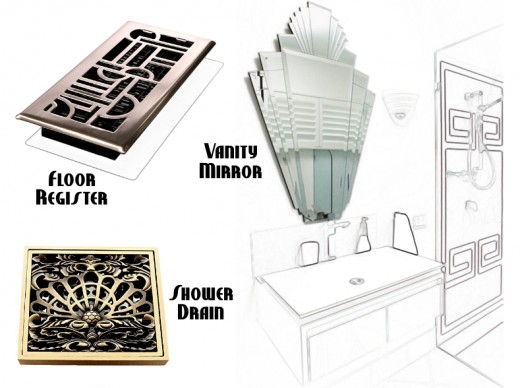
Style. A simple way to get the Art Deco look in the bathroom is to use black and white checker tiles and a decorative shaped mirror. Small details you see every day are effective, too. Like stylized shower drain, faucet handles, and floor register.
Furniture
When many people decorate their homes, they do so with a filler mindset. They have an open space in a room and think "What can I put there?". In time the home gets filled with furniture, and the furniture gets filled with stuff. It eventually becomes too cluttered and it's time for a yard sale. I approach it differently. I think first of the things I absolutely need to store or the function I need to serve. If those things cannot be stored in closets or cabinets then I look for furniture. There's probably interior design terminology for this mindset, like utilitarian or minimalism. This strategy allows us to save time dusting and cleaning. I also believe an uncluttered home puts your mind at ease and helps you look towards the future.
Generally speaking, I have a preference towards counters and furniture with rounded corners and a streamlined modern Zephyr look. It looks good, and it's also safer. I'm surprised more bathroom counters don't have round edges for if people fall onto them. Not to get too graphic, but when people get dehydrated and pass out on the toilet, why is there a sharp-edged counter nearby that they can knock their head off of?
Beds. Modern beds built lower to the floor (platform beds) are interesting, particularly their safety in case of falling off, and their lack of box spring. I may stick with the more traditional 2 foot mattress height however. You are further from the coldness and germs on the ground, and bending down to make the platform bed each day won't be as good for your back. Also older people have an easier time getting out of higher beds. I also like beds that recess inward and towards the floor to prevent stubbing your toes and shins.
From a cleaning perspective, I don't want access to the floor under my bed. This way it doesn't have to be vacuumed under or moved. I also will go with walk-in closets thus eliminating the need for a dresser.
Chairs and Sofas. A sofa just needs to be something comfortable that is long enough to lay down on. And a material that's easy to clean. I like faux leather. You can clean it with a mild detergent and cloth (and a polish if you'd like). I don't want any cloth material because I don't want to vacuum and then steam-clean a piece of furniture. You'll have no problem finding stylish Deco chairs. I especially like furniture where all sides extend to the floor so that you can sweep and mop around it without having to move anything.
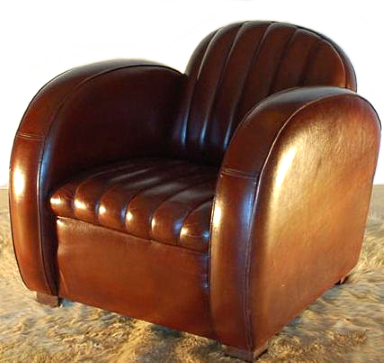
Rug. I would rather not have to own any rug but hard floors in lounging areas probably won't be comfortable. My ideal material would be like a smooth exercise mat. I don't want anything with texture because I like the idea of easy-clean wipe downs instead of wet vacs. This must not be a good or popular idea though, because every area rug I'm seeing is some form of fabric.
With that in mind my area rug choice so far is nylon. Nylon is a synthetic fiber that's good at resisting water and stains (it is sealed with protectant). It is also extremely durable. It does need to be vacuumed and when necessary wet-vacced. It's one of the easiest rugs to keep clean.
People swear by the high quality and long life of wool rugs. One thing that turns me off about them, though, is that they shed for a year or so after you buy them, so you have to vacuum often. It's recommended they be professionally cleaned every few years.
Storing. Below is a "commode", which is a French word for "convenient". It's basically a cabinet or chest of drawers. It can store small appliances, plates, or other occasional use items.
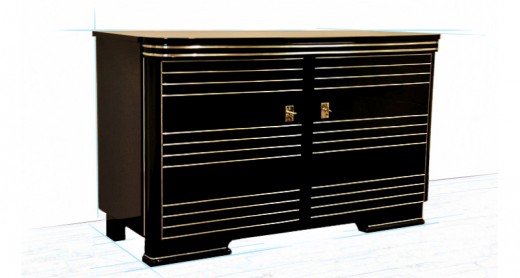
There's Deco-style furniture of every type, including large entertainment units, which can store a lot of stuff. Find one with a glass cabinet for easy cleaning. It'll keep dust build-up off your electronics, but have some ventilation in the back to prevent overheating. Most remote controls work fine pointed through glass.
Eating. Instead of dining room tables, I like built-in high counters with stools. I'll use the same Quartz counter top that I use for the kitchen counters. In fact, I may just extend the kitchen counters and forget a dining room altogether. Walking food and dishes back and forth between kitchen and dining room every meal always seemed kind of pointless to me.
Kitchen
Cabinets: As a fan of Art Deco my first instinct is to go full industrial and cover the entire kitchen with stainless steel. It's great for easy, thorough cleaning, and I love the look. Unfortunately, I'm also a neat freak and stainless steel shows off scratches and fingerprints. Aluminum cabinets also would be a top choice, but they can dent.
I'm thinking smooth, glossy white modern cabinets. White because dark colors also show off smudges and fingerprints. I don't have children but if I was worried about the kids messing them up, I'd consider a matte finish instead of gloss. I think of finishes like this: A glossy finish is easier to actually clean, while a matte finish is better at hiding something not-so-clean. I also like the handle-less look, with no drawer knobs or exposed hardware. There are different methods like push-to-open (where you just tap it and it opens up) and recessed finger-pulls on the top or bottom of drawers. The push-to-open mechanisms might malfunction with time so I'll probably go for the pull drawers. The obvious downside is if you have messy fingers those drawers are getting dirty. But wiping everything down after cooking is easier now without the handles. I also want those cabinets ceiling high to avoid gunk build-up on top.
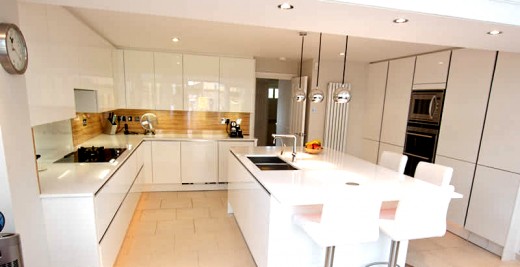
As far as cabinet material, you already know I don't like the look of wood. But even if I did, I wouldn't necessarily choose real wood cabinets. There's wood, medium density fiberboard (MDF), particle board, plywood, and others. For maintenance and longevity, I found no obvious winner. Quality varies by process and manufacturer and each installer has their own preferences. My best advice is to just find a knowledgable installer and follow their advice to suit your individual needs.
But regardless of what he/she recommends for material, ask questions confirming that your cabinets are coated and designed properly so as to prevent warping, water damage, and bowing shelves. This can happen with cheap pre-assembled products, particularly near sinks and dishwashers.
Countertops. The countertops I'll likely use are Quartz (quartz sinks and countertops are composites, made of quartz, resins, polymers, and pigments). Quartz is food-safe, durable, scratch-resistant, stain-resistant, heat-resistant, doesn't need sealed, and cleans easily with soap and water. It also has many color options and can be made to look like other stones, like marble or granite. (Don't confuse Quartz with Quartzite, which does have to be sealed) My counter-tops will also be rounded, both to help prevent corner chipping and to avoid injury if bumping into it.
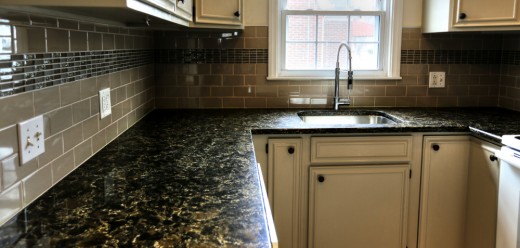
Appliances. If it's a new home or total kitchen renovation, many people prefer buying a complete matching set of appliances from one brand. It makes for a faster purchase, everything will match, and that's typically a way of getting a better deal. If you don't know where to start, reliable brands include Whirlpool, LG, Frigidaire, Maytag, Samsung, Bosch.
Matching brands is not necessary, though. Not only is matching not always possible, but it's probably not even the best strategy if you are looking for the best appliances, as some brands are known for making a particularly good product. If you'd like to spend the extra time to research each appliance, search online with terms like "most dependable refrigerators" "most durable stand mixers" "Model XYZ kitchen sink durability", "Oven A vs Oven B reliability", etc. and try to find un-biased review sites and read a lot of different customer reviews.
As far as which color finishes to use for appliances, generally speaking, the darker the color appliances, the more you will notice scratches, dents, and fingerprints. I'm saying no to black stainless steel because when it scratches, the bright stainless metal underneath becomes easily visible. Stainless steel, you know my take from above. Matches everything and looks great, but not smudge-proof or scratch-proof. Slate is a grey metal tone with a matte (duller) finish, which also looks great. Slate is a warmer look than stainless steel and the reviews seem very positive as far as hiding fingerprints. GE still appears to be the only company making slate finish appliances. Black Slate is an even darker grey matte finish by GE, still finger-print resistant. White is also good. No smudges or fingerprints and it helps keep the room bright.
Backsplash. The purpose of a backsplash is to protect the walls from food and oil splatters in the cooking area. We want something that looks nice, is very easy to clean, and has high fire resistance. Ceramic or porcelain tiles, or Stainless steel are good choices. I like painted tempered glass as well because it not only looks sleek, but comes in a variety of colors. It's a large plate of glass with one painted side, which touches the wall. I would design it one piece so it has no seams. If price becomes an issue you can buy glass tiles as well, which are easier to install.
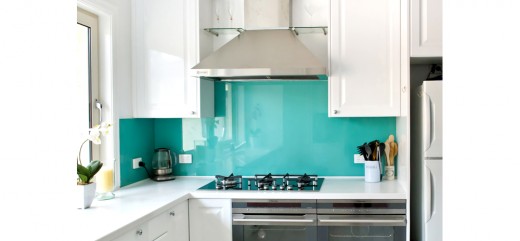
Kitchen sink. Two basic types of sinks are top-mount (drop-in) and undermount. A top-mount is installed from above and the sink hangs over the counter. The undermount is installed from below, leaving you slightly more counter space. Both are caulked at the seams to prevent leaking. I've always owned a top-mount, but I'm sold on the undermount sink with a zero reveal or a positive reveal. It allows you to push water and crumbs from the counter easily into the sink, yet at the same time keeping that seam easily visible for cleaning of any gunk build-up.
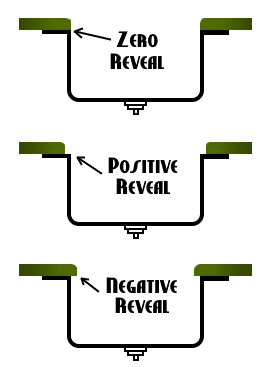
There are many good choices for low maintenance kitchen sink materials.
Fireclay is durable and easy-to-clean with little-to-no staining. These sinks are available in white, biscuit, blue, or black. Fireclay is expensive and I've read owners saying they do form very little chips in theirs when something heavy falls in it.
Stainless steel is still a very popular low-maintenance choice. They will scratch and they may even dent, but they are super easy to clean. They still look shiny after an occasional polish, even with the scratches.
Quartz sink. Quartz sinks and countertops are composites, made of quartz, resins, polymers, and pigments. Quartz is extremely durable, easy to clean, resistant to stains, scratches, dents and chips.
Composite granite sink. Granite has all of the same positive features of quartz sinks, but are even more durable (so much so that you could even break your dishes if dropped in too hard). Most composite sinks have a lightly textured matte finish.
The sink material I choose may just come down to the color sink I want. I'm going with gloss white handleless cabinets and marble-looking floors and counters. I'll probably go with a either a white quartz or stainless steel sink. If you're not sure how everything will come together try one of those online home decoration simulators. It won't be exactly what you want but it's better than just using your imagination.
Style. Most kitchens are already high maintenance and visually busy (cabinets, countertops, appliances, stools), so if I did any extra styling there it would be with outline stripe floor tile or Art Deco striping painted into the backsplash. I haven't found anyone who has done this on glass backsplash, but it could look something like this...
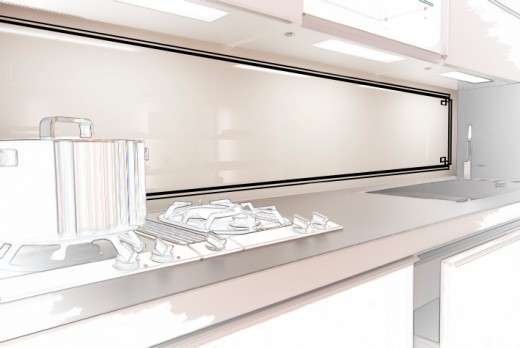
I like this idea because painting the glass seems easier than painting stripes on all of the cabinets.
I have found some kitchen faucets labeled "Art Deco" but they really don't differ much from contemporary faucets. There are also several attractive and inexpensive Art Deco floor registers and air returns.
Flooring. I'll choose the same stone-like porcelain tiles as I do throughout the house (see "flooring" above). I've seen many strong opinions to stay away from white, especially in the kitchen. Every bit of food, dirt, and dog hair stands out, making floor cleaning nearly a daily routine. I'll also avoid white grout, even if it's epoxy grout.
Ceilings
Ceiling Height: While I prefer living in a smaller house, I want ceilings that are higher than the typical 8 foot norm. Even though heating and cooling costs are slightly higher, taller ceilings look more elegant and less claustrophobic. My personal preference is 9 or 10 feet. This way ceiling-high kitchen cabinets won't look too out of place or be too impractical. At this height, light bulb changes and dusting can be easily accomplished with a telescoping pole with end attachments. If the bulb sticks, you can still use a step ladder to unscrew it by hand. This task is much more harrowing with a 20' ceiling (and sometimes not even possible).
Again, I'm only using simple easy-change recessed lights. But if you want one of those gorgeous Art Deco chandeliers installed onto a very high ceiling, consider installing a light lift system. A light lift is a motorized device installed above the ceiling that lowers the entire chandelier to the ground floor. After you change the bulbs and clean it, turn the key or flip the switch and it raises back into the ceiling.
Style. I'll choose smooth ceilings instead of textured for easier dusting. But a trade-off I may make with more dusting is selectively placed recessed ceilings (also called inverted or tray ceilings). This would be somewhere I want to stand out, like a living room overlooking a beautiful view. Simple black striping gives it a Deco feel. It might get too busy up there if combined with ornate molding, however.
Another interesting ceiling option is metal tile, which can come in steel, copper, chrome and aluminum finishes. They are available in many different designs as well. Real-metal tiles need no maintenance. They won't absorb moisture (no mold or mildew) and won't peel. There is also faux-tile, which is cheaper but has the same look as real metal. I haven't found a look yet that I would use, but I'm sure there's many ways to incorporate it into modern Art Deco.
Other Furnishings
Artwork. Few things scream Art Deco more than travel posters of faraway lands that are open to discovery. Much of the artwork we know now as Art Deco wasn't vintage at the time. The clothing styles were new and more exotic travel destinations were becoming accessible to affluent tourists. In that spirit, artwork I would choose is traveling to Mars, deep ocean, deep space, robotics, and other modern frontiers. I am a sucker for the old school illustration styles, though, so that stays.


I don't bother with original artwork. Preserving original art requires ideal humidity levels, heating, and light conditions. Even if reproductions fade or get destroyed, they are replaceable. I'll place art in areas of the house that need more color or seem visually off-balanced.
Statues. Art Deco sculptures were often ancient Gods/Goddesses, tasteful nudes, people, and animals. They are often integrated with ornate pillars, globes, wings, feathers, bow and arrows, and real working lights. They also tend to be angular and exaggerated in both appearance and pose. The vast majority are not of futuristic themes like spaceships or flying cars (I don't see why yours couldn't be though).
The subject matter you choose will be personal. For me, the only point of owning a statue is to be reminded of something. I want to be reminded of adventure, happiness, and success. To be inspired. So I would want something like a strong man or woman looking up while working on something or moving forward. It would be placed above eye level to enhance the effect.
Material: Naively, I thought it would be easy to find a statue material you could place outside that wouldn't fade, would last for many decades, and require zero upkeep. To keep their original color, bronze statues need to be cleaned and re-waxed every several months-to-a year. I like shiny stainless steel, but even that still rusts and occasionally has to be cleaned. Concrete and marble don't meet my criteria, either. Both need occasional cleaning or resurfacing.
Having statues indoors is less upkeep, as there is no moisture or freeze-thaw cycles. Determine what kind of finish looks best with your particular piece. If my example has a polished stainless steel finish, I'm wondering how my wall colors, floor tile, and recessed light reflections will look wrapped around the sculpture. Maybe it's too light. Maybe a darker bronze will make the figure more recognizable. Think along those lines. When you decide on the finish, go looking for the material, whether it's stone, metal, resin, etc. (this could be a whole other post, as I can't find a complete guide on this).
With all that said, common indoor statue materials are bronze, brass, copper, marble, granite, and steel.
Indoor plants. I'm probably not going to have houseplants, real or fake. I do believe the consensus that houseplants make people more productive and feel less stressed and relaxed. I'm not, however, convinced that having plants in your home will make much difference in air quality. At least not as much difference as opening up the house to fresh air on a nice day (I plan to be on the west coast of the United States where there are many nice days).
I'm not interested in dusting off plants, watering, re-potting, or any of the other small chores involved. I'm having large windows so my views of beautiful gardens and palms will be constant. Also, in a western climate, I'm going to be doing things outdoors often. If my home looks too industrial and my Deco/tropical theme needs some nature, I'll add a few potted palms. No big deal.
If you are looking for some easy to maintain indoor plants, here are some that would have fit my theme: parlor palm, aloe, pothos, rubber tree, areca palm, croton.
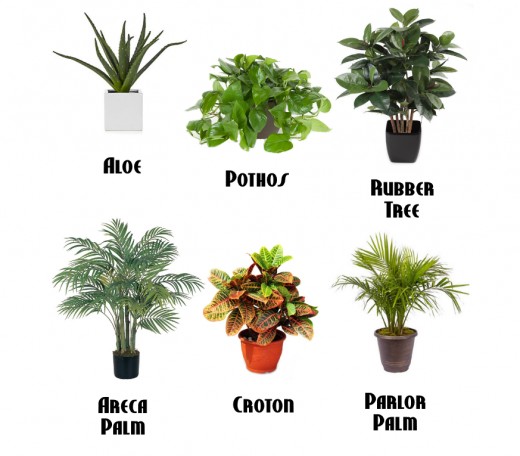
Conclusion
I really hope you got something useful from this article. Again, I'm not a professional. I guarantee there are things I missed or I'll change my mind on later. What will not change, though, is my desire to live simply but elegantly. And while the opulence and large scale of Art Deco seems in contradiction to my lazy housekeeping ways, I'll keep striving to marry the two.

